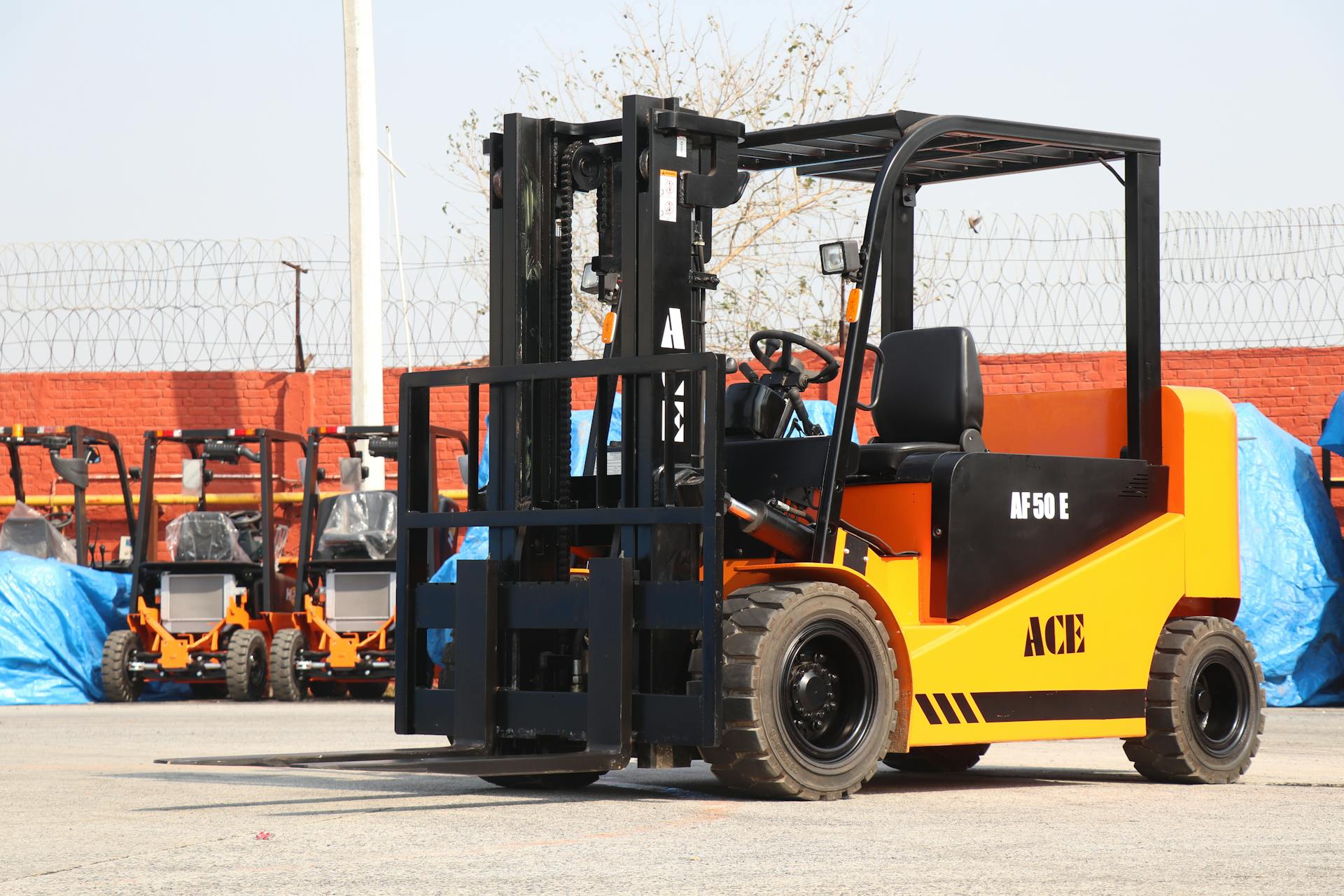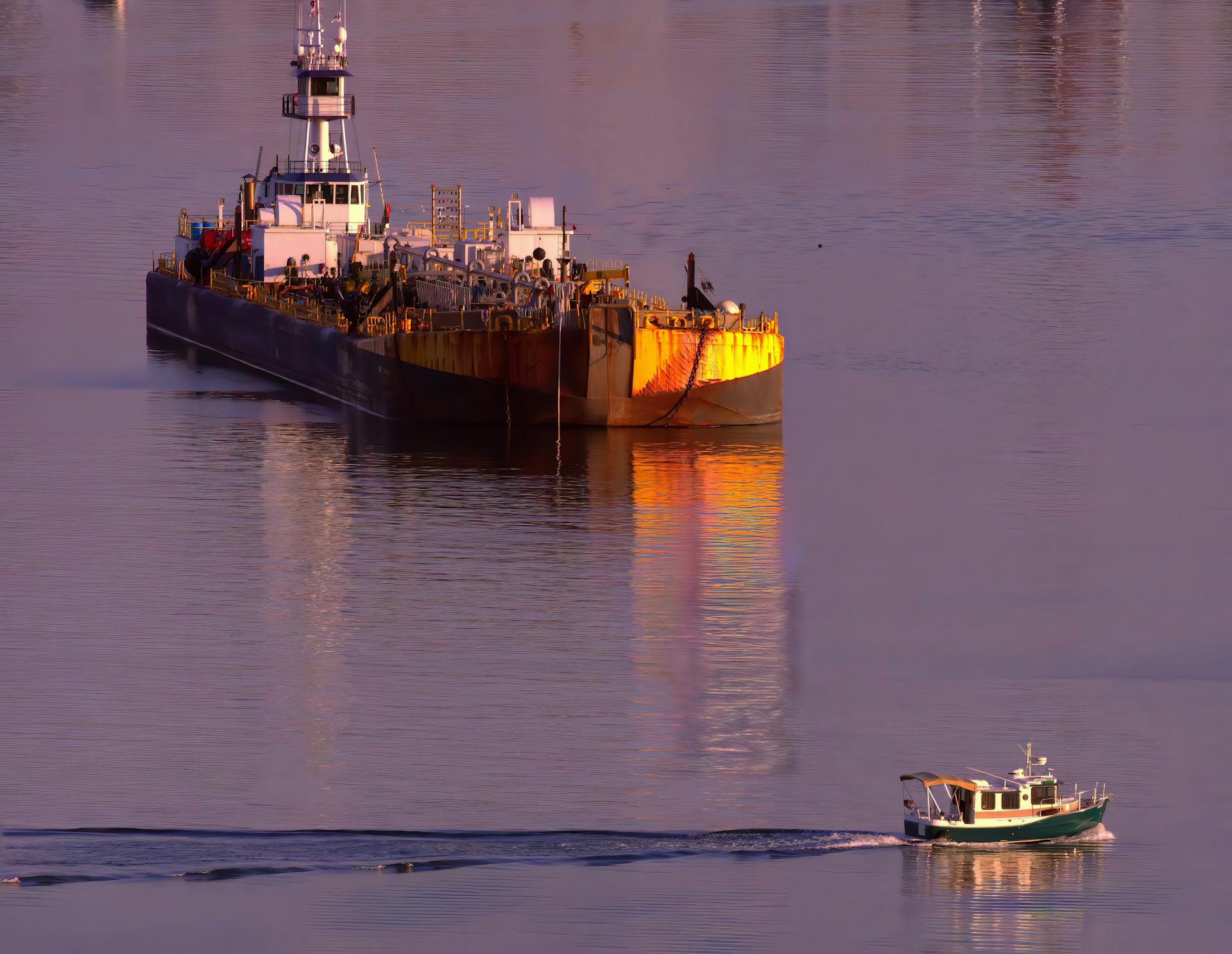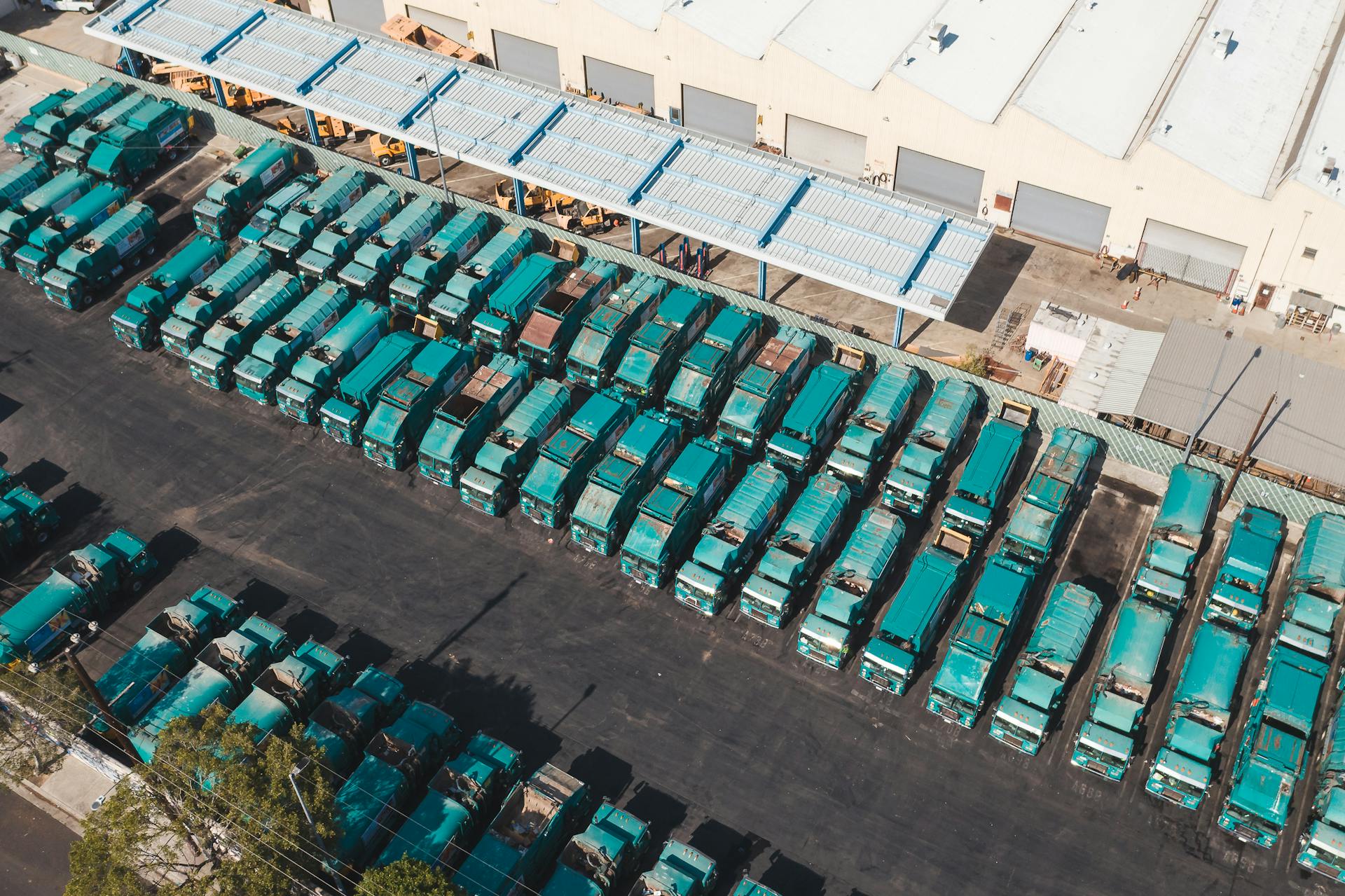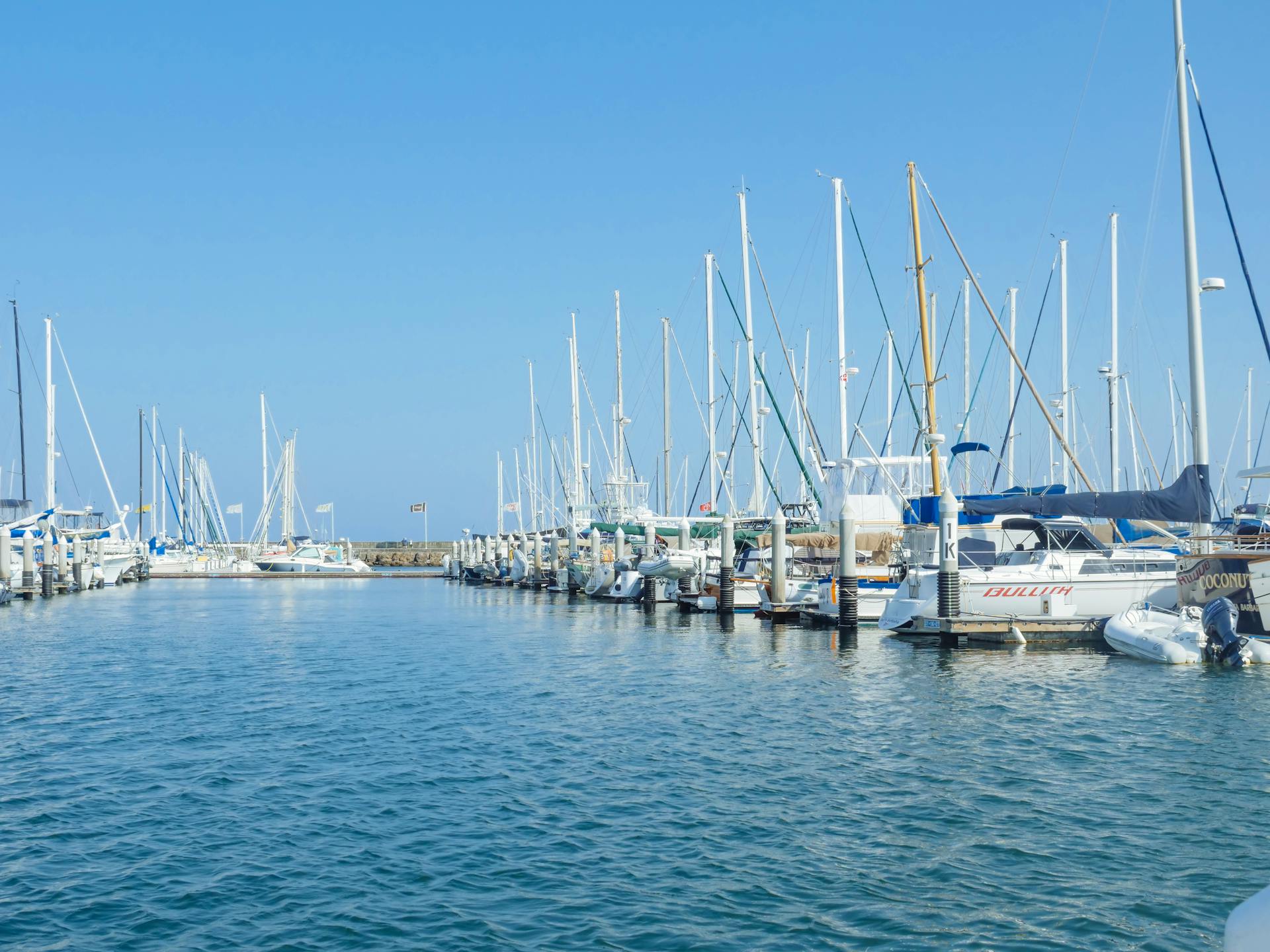
Marine electric propulsion is a game-changer for the maritime industry, offering numerous benefits and applications.
Electric propulsion systems can significantly reduce greenhouse gas emissions, with some studies suggesting a reduction of up to 90% compared to traditional diesel engines. This is particularly important for environmentally sensitive areas, such as coastal waters and sensitive ecosystems.
The efficiency of electric propulsion systems is also noteworthy, with some systems achieving an efficiency of up to 95%. This means that more energy is used for propulsion, rather than lost as heat or noise.
The versatility of marine electric propulsion systems allows them to be used in a wide range of applications, from small ferries to large cargo ships.
Benefits of Marine Electric
Choosing an electric propulsion system for a ship has some amazing benefits.
One of the biggest advantages is that it's a leaner installation, requiring fewer diesel motors and cylinders.
This results in lower costs of maintenance and less frequent demand for spare parts, which saves money.
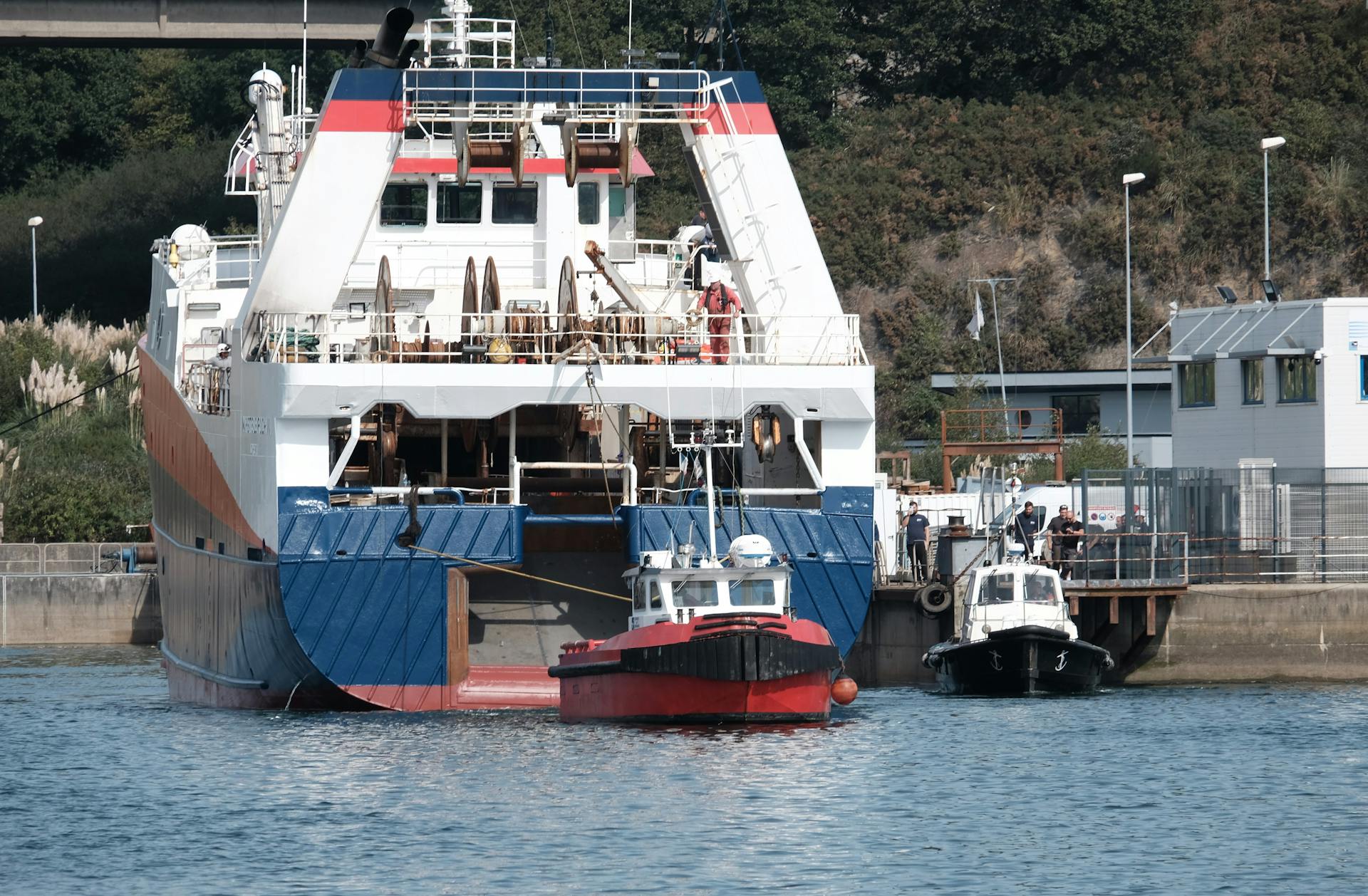
With electric propulsion, motors can operate at constant speed, reducing wear and tear.
This means that ships can run more efficiently and effectively, which is a huge plus.
Constant speed operation also leads to fewer engine failures and breakdowns.
Overall, marine electric propulsion systems offer a range of benefits that can save ship owners money and improve their operations.
Types of Marine Electric Systems
There are several types of marine electric systems, each with its own unique characteristics and applications.
The most common type is the 12-volt system, which is widely used in smaller boats due to its simplicity and affordability.
A 24-volt system is often preferred for larger vessels, as it provides a more stable and efficient power supply.
DC systems are also popular in marine applications, as they are well-suited for the intermittent power demands of boat electronics.
Broaden your view: United States Committee on the Marine Transportation System
Hybrid Solutions
Hybrid Solutions offer a cost-effective choice for vessels with lower, but variable energy demands for on-board systems.
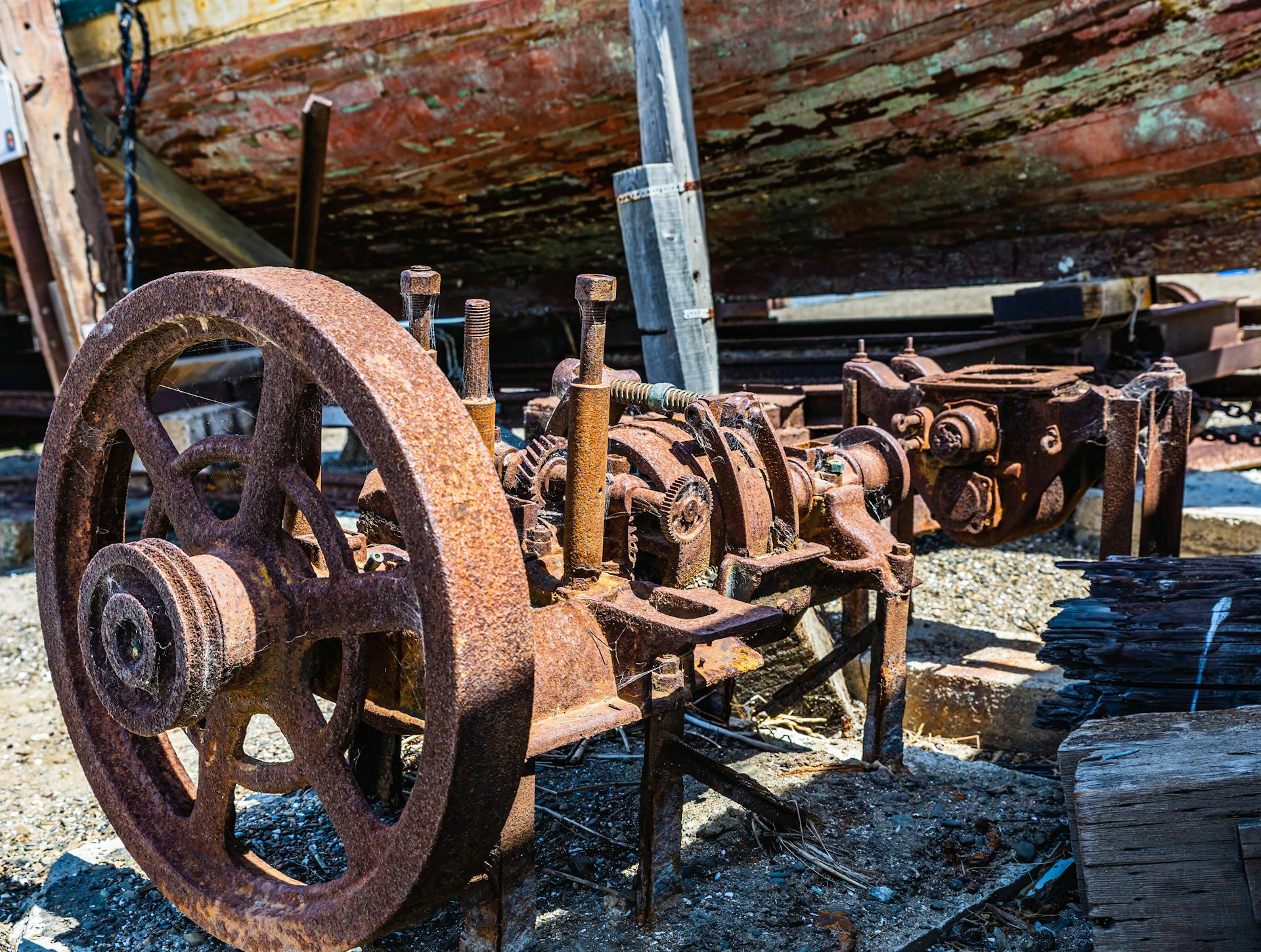
For space-constrained applications, power take-off / power take-in (PTO/PTI) shaft generators are ideal, diverting excess main engine power to ships' service loads.
Hybrid electric solutions can retain conventional mechanical drive configuration, while supplementing available energy and reducing emissions.
By utilizing excess power, hybrid solutions can help vessels optimize energy use and minimize waste.
Able to work in conjunction with existing systems, hybrid solutions provide a flexible and efficient way to meet energy demands.
This can be especially beneficial for vessels with variable energy needs, allowing them to adapt to changing circumstances.
- Cost-effective choice for vessels with lower, but variable energy demands for on-board systems.
- Able to retain conventional mechanical drive configuration, but supplement available energy and help to reduce emissions.
- Power take-off / power take-in (PTO/PTI) shaft generators are ideal for space-constrained applications, diverting excess main engine power to ships’ service loads.
Systems Level II
Systems Level II is a 2-day class designed for those who have already taken the Marine Electrical System Basics class. It's meant for hands-on training in troubleshooting electrical failures and designing/installing new equipment and circuitry.
Students will work in small groups to troubleshoot faults in circuitry developed specifically for the course. This is a great way to learn by doing, and it's a valuable skill to have when working with marine electrical systems.
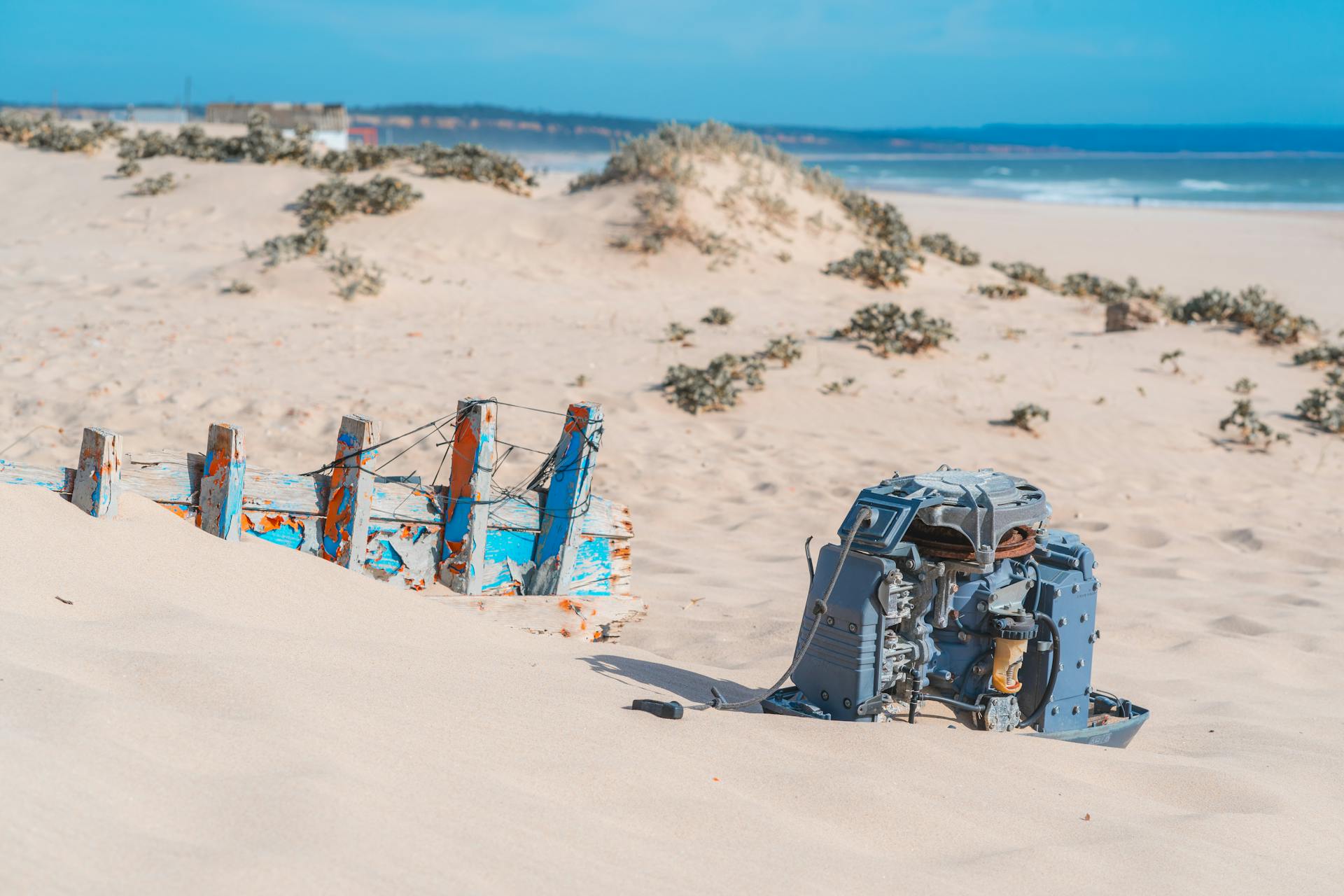
Safety and Connections are crucial topics in this course. Students will learn how to ensure safe connections and prevent electrical shock.
Amp Meters and Monitors are also covered in detail. These tools are essential for measuring electrical flow and identifying potential issues.
Switches, Relays, and Solenoids are other key components that students will learn about. Understanding how these devices work is critical for designing and installing new equipment and circuitry.
Loads and Equipment Demands are also important topics. Students will learn how to calculate the power requirements of different systems and ensure that they are properly sized.
Here's a list of some of the key topics covered in Systems Level II:
- Safety and Connections
- Amp Meter and Monitors
- Switches, Relays, Solenoids
- Loads and Equipment Demands
- Battery Chargers and Inverters
- Equalization Battery Charge
- Alternators and Regulators
- Shore Power
- AC Generators
- Electrical Flow Diagrams
- Galvanic Isolators and Isolation Transformers
- Stray Current and Corrosion
- Alternative Power Sources - Solar and Wind
By taking the Systems Level II class, students will gain a deeper understanding of marine electrical systems and be able to design and install new equipment and circuitry with confidence.
DC Rated Devices
DC Rated Devices are designed to handle direct current, which is crucial for marine electric systems that often require DC power for essential systems.
Our product experts can assist you in selecting the right DC Rated Device for your specific needs, and you can get in touch with them now.
These devices are available in various configurations, and our team is here to help you choose the one that suits your requirements.
Marine Electric Applications
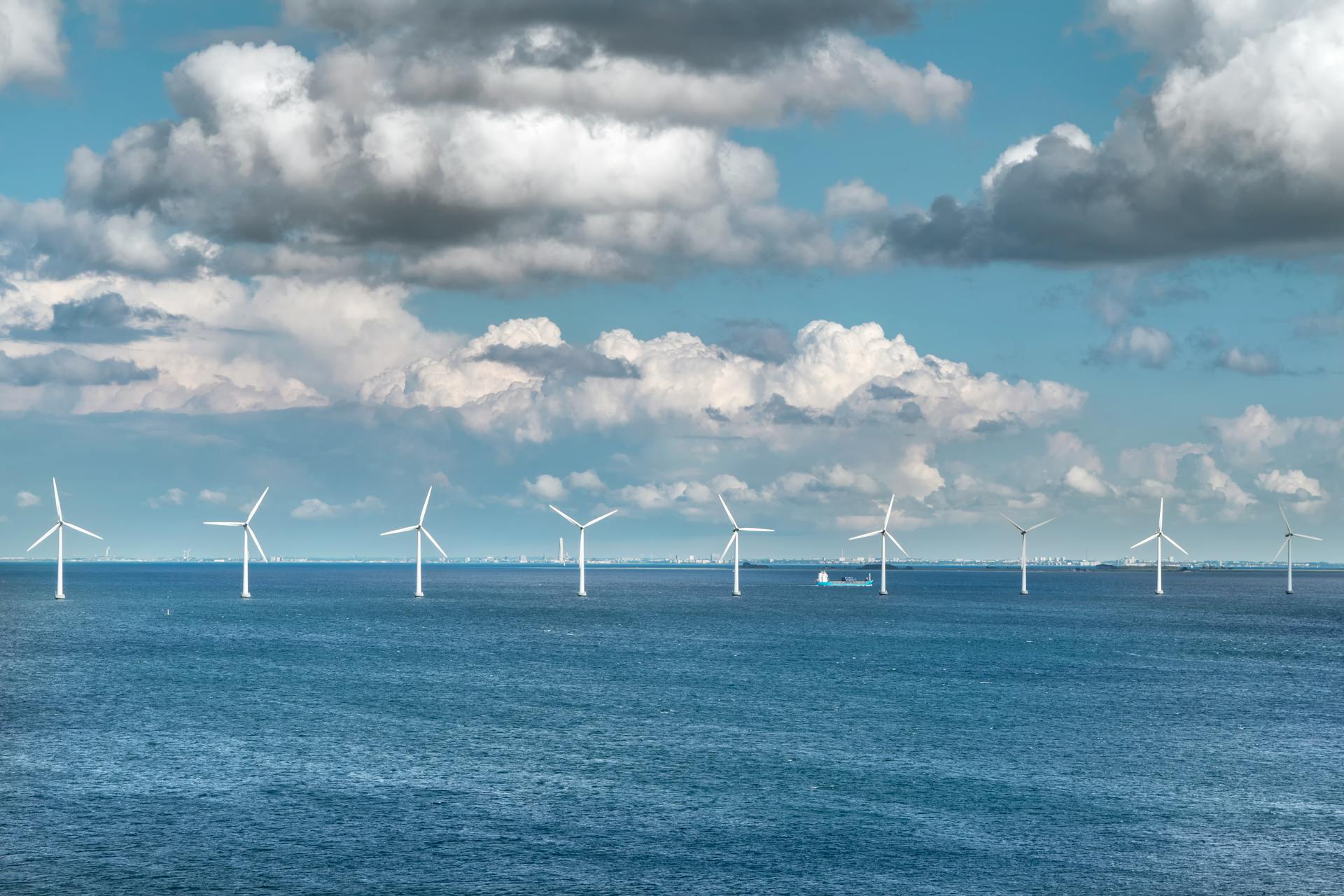
Marine electric applications are diverse and widespread. Electric propulsion is a reliable and low-noise design, making it ideal for research and survey ships.
Special vessels like icebreakers require propulsion systems with excellent dynamics to permit the flexible use of the torque speed characteristic. This allows for high-over torques and propeller standstill.
Electric propulsion systems are also used in cruise ships and ferries, offering numerous advantages such as low noise and vibration-free operation. Diesel-electric propulsion systems are a popular choice for these vessels.
Here are some examples of marine electric applications:
- Silversea's luxury cruise liner Silver Dawn uses a high-quality, reliable, and quiet propulsion system.
- Princess Cruises relies on Wärtsilä's propulsion system for minimal engine noise and vibrations on its vessel Discovery Princess.
- Wärtsilä's hybrid upgrade brought significant fuel savings for the offshore vessel North Sea Giant.
Smoother Manoeuvring
Electric propulsion systems have excellent dynamic characteristics, allowing for smoother manoeuvring and positioning.
Changes in propeller speed and propeller reversals during manoeuvring can be carried out at optimum acceleration rates, making navigation more efficient.
The electric propulsion system's ability to quickly adjust propeller speed and direction makes it ideal for navigating through tight spaces or changing course quickly.
This is especially useful in situations where precision and control are crucial, such as docking or navigating through congested waterways.
The electric propulsion system's smooth operation also reduces wear and tear on the vessel, extending its lifespan and reducing maintenance costs.
Merchant Vessels
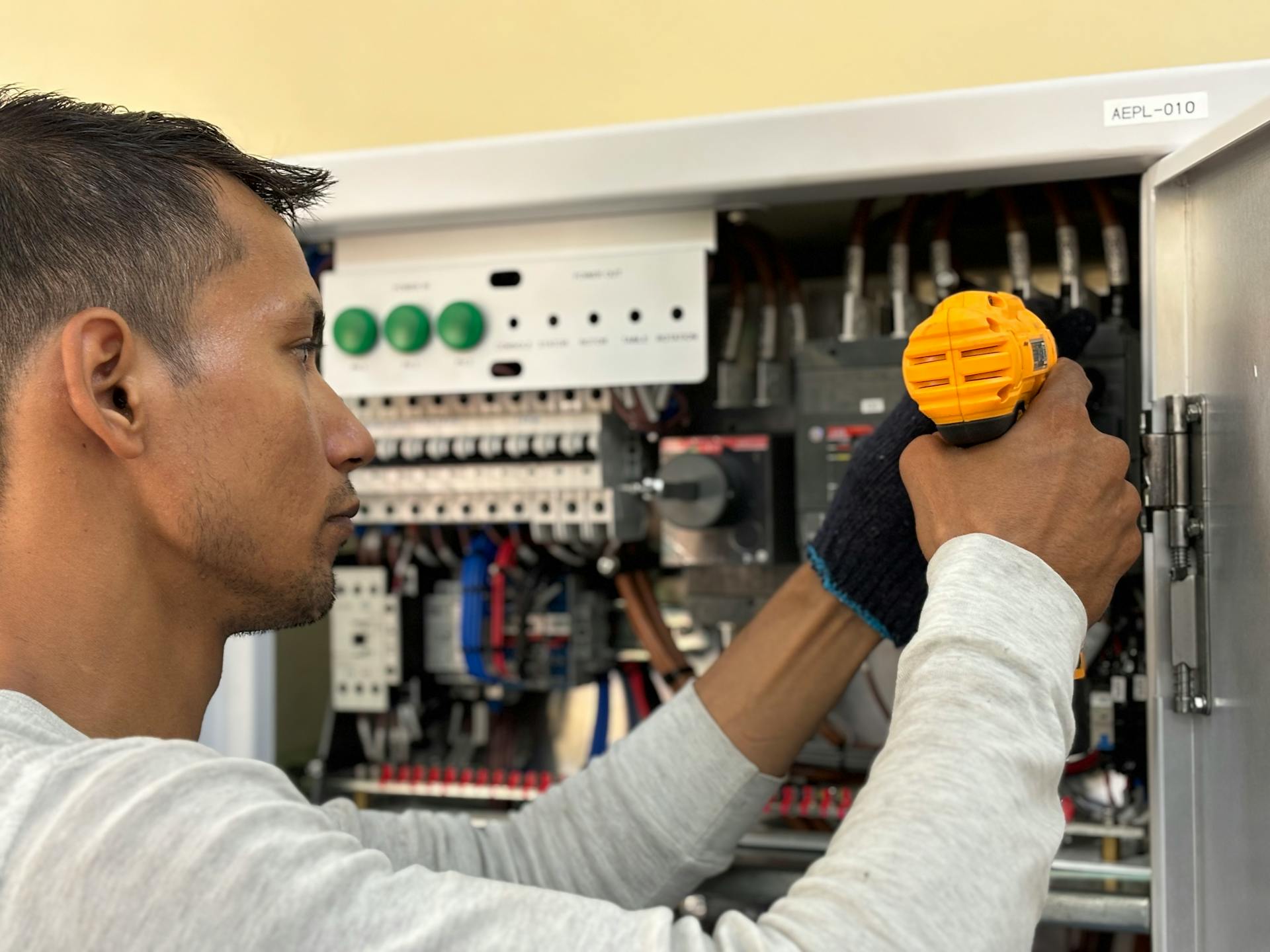
Merchant vessels such as feeders, RoRos, short-sea PCTCs (pure car and truck carriers), and small tankers will gain significant benefits from an electric propulsion system.
These vessels often operate at varying speeds and have a high hotel load, making electric propulsion the ideal choice. Electric propulsion systems offer numerous advantages, including low noise and vibration-free operation.
For merchant vessels, electric propulsion can provide improved efficiency in partial propulsion power mode, a high degree of reliability, availability, and redundancy, lower emission levels, and reduced wear and tear.
Some examples of merchant vessels that have already benefited from electric propulsion include feeders, RoRos, and short-sea PCTCs, which have seen significant improvements in efficiency and reliability.
Here are some examples of merchant vessels that have successfully implemented electric propulsion:
- Feeders
- RoRos
- Short-sea PCTCs
- Small tankers
Interesting Insights
Electric propulsion for ships is a game-changer, and for good reason. It's more efficient than traditional fossil fuel-based systems, reducing greenhouse gas emissions and saving money on fuel costs.

The hand-picked articles we've discovered offer some fascinating insights into this technology. Discovering these articles can help you learn more about electric propulsion for ships.
A key benefit of electric propulsion is its reduced noise pollution. Traditional ships can be quite loud, disrupting marine life and affecting the overall ecosystem.
Electric propulsion systems can be powered by various energy sources, including wind, solar, and even hydrogen fuel cells. This versatility makes them an attractive option for ship owners.
By switching to electric propulsion, ships can reduce their carbon footprint and contribute to a more sustainable future. It's a step in the right direction, and one that's worth exploring further.
Features and Advantages
Marine electric propulsion systems are an environmentally friendly choice, reducing emissions of NOx/NO, CO, CO2, and soot. This is because they allow diesel generators to operate within their optimal range, even when the load from propulsion varies.
The ship's electric grid is incredibly versatile, suiting both smaller and larger vessels. This means that marine electric power and propulsion can meet the needs of a wide range of ships.

One of the key benefits of marine electric power and propulsion is its simplicity and flexibility. This is because it allows for the combination of power for propulsion and on-board equipment in a single connected system.
Here are some of the key features and advantages of marine electric power and propulsion:
- Up to 10% fuel-efficiency improvements
- High maneuverability and thrust requirements
- Ideal for accommodating growing power demands over a ship's life
- Easy to integrate with future power technologies and fuels
Converter Topologies
Converter topologies play a crucial role in electric marine propulsion systems. There are three basic topologies to consider: AC, DC, and Wärtsilä's patented Low Loss Solution.
AC systems are the most common diesel-electric propulsion solution, available in Low Voltage (440 / 690V) or Medium Voltage (6.6 / 11 kV) settings. These systems combine a switchboard with transformers and AFE or DFE converters for each propulsor.
A DC system is gaining popularity, always in Low Voltage (1000V) setting. It has the advantage of connecting variable speed gensets and batteries, which are always DC.
Wärtsilä's patented Low Loss Solution reduces the number of transformers needed and electric losses, while increasing the redundancy of the propulsion system. With over 200 installations, it's the market standard for DP/offshore vessels.
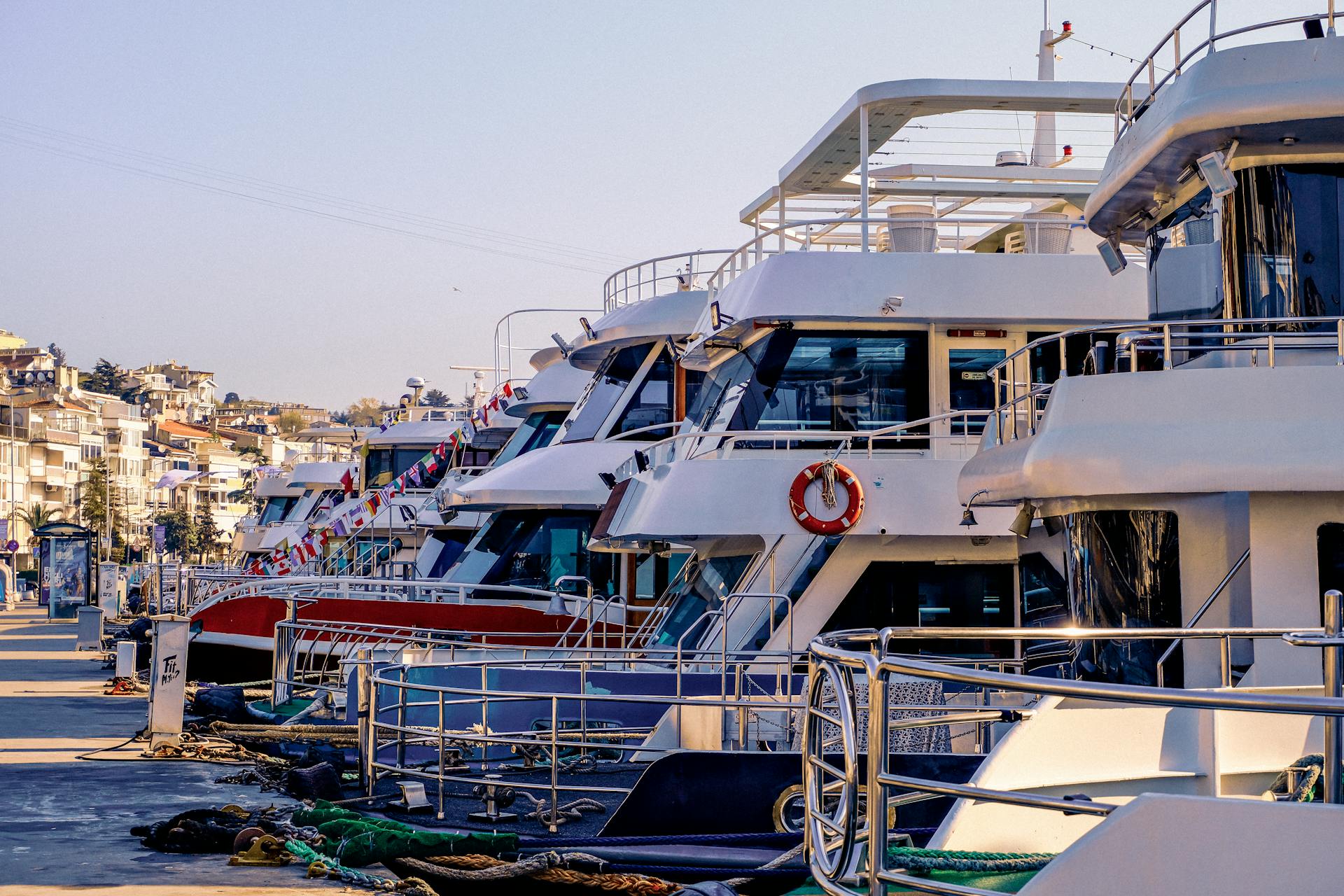
Here are the key features of each topology:
Low Noise and Vibration
Electric propulsion drives are a game-changer when it comes to reducing noise and vibration. They're unsurpassed for their quietness of operation, making them ideal for applications where noise is a concern.
In fact, electric propulsion drives are so quiet that they can be used in environments where traditional propulsion systems would be too noisy.
Easier to Operate
Operating an electric propulsion system is a breeze thanks to its advanced automation features. A ship navigation and command system can control the electric propulsion drives automatically, which means less room for human error.
This automation also allows for manual control from any console on the ship, giving you flexibility and freedom to operate the system as needed. The functions and operating states are monitored to prevent operating mistakes and overloads.
The ability to monitor the system's functions and operating states in real-time means you can stay on top of things and make adjustments as necessary. This helps prevent potential problems and ensures the system runs smoothly and efficiently.
Are There Disadvantages?
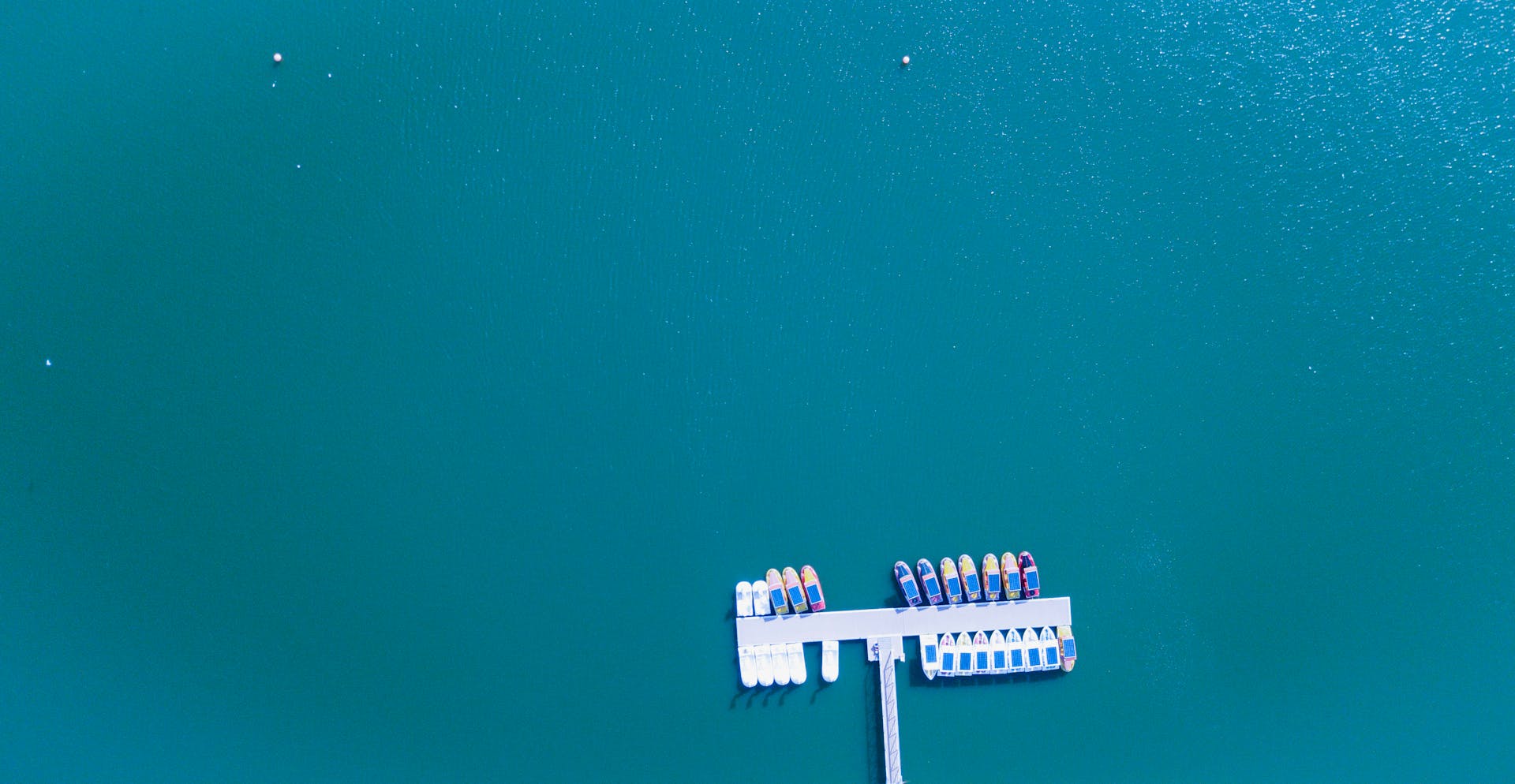
Electric propulsion does have one notable drawback compared to mechanical propulsion: electric losses.
These losses are usually smaller than people think.
Marine electric propulsion has come a long way in minimizing these losses, making it a more viable option for many applications.
High losses are often a myth, and this article explains why.
Product and Quality
Our marine electric products are built with durability in mind. They're designed to withstand harsh marine environments.
We take pride in building products that provide safe and dependable power. This means our products can keep up with the demands of your marine lifestyle.
You can rely on our products to last, with a focus on lasting power that won't let you down.
Our Products
Our Products are designed to meet the unique needs of our customers. We have a wide range of products to choose from, including marine transformers and shore power cable sets.
Our marine electrical products are built to last, with a focus on durability and reliability. Whether you're looking for a simple wiring device or a complex system, we have the expertise to deliver.
We have a state-of-the-art marine transformer that's perfect for those who want the latest technology. Our shore power cable sets are designed for safety and efficiency, making them a great choice for any application.
Built to Last

Our products are built to provide safe, dependable, and lasting power in harsh marine environments. This is evident in the fact that they are designed to withstand the rigors of the ocean.
Marine Electrical Products' focus on durability is a key factor in their success. Their products are built to last, providing customers with peace of mind and reducing the need for frequent replacements.
The company's commitment to quality is reflected in the materials and construction methods used in their products. For example, their products are built to provide safe, dependable, and lasting power in harsh marine environments.
Frequently Asked Questions
What caused the marine electric to sink?
The Marine Electric sank due to a fatal hull damage caused by running aground during a maneuver to assist the Theodora. This grounding incident occurred hours before the ship's eventual sinking.
What does Marine Electric do?
Marine Electric provides integrated electrical and automation solutions for the marine and industry/commercial sectors, offering a wide range of innovative solutions for shipping and industrial applications. From power generation to navigation systems, we deliver reliable and efficient solutions for a safer and more sustainable future.
Sources
- https://www.gevernova.com/power-conversion/product-solutions/Commercial-Marine-Electric-Power-and-Propulsion
- https://www.cookwithkenyon.com/industries/boats/
- https://www.wartsila.com/marine/products/ship-electrification-solutions/electric-propulsion-systems
- https://www.hubbell.com/wiringdevice-kellems/en/solutions/marine-solutions
- https://www.annapolisschoolofseamanship.com/electrical
Featured Images: pexels.com
